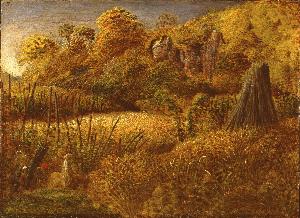Erastus Dow Palmer
Erastus Dow Palmer
Place: Pompey
Born: 1817
Death: 1904
Biography:
Erastus Dow Palmer was a prominent American sculptor, born on April 2, 1817, in Pompey, New York. He was the second of nine children and showed early artistic promise, pursuing his father's trade of carpentry. After marrying Matilda Alton in 1839 and having a son, both mother and child died soon after. He remarried to Mary Jean Seamans in 1840.
Early Career
Palmer started by carving portraits in cameo and earned the encouragement of Thomas R. Walker, a local art patron in Utica, who introduced him to prominent artists in New York City. By 1849, Palmer had relocated to Albany with his family and had transitioned from cameo-cutting to large-scale sculpture. He worked in a primarily neoclassical style.
Notable Works
Some of his major works include The White Captive, which is now in the permanent collection of the Metropolitan Museum of Art in New York, and Peace in Bondage (1863), and Angel at the Sepulchre (1865) in Albany, New York. He also created a bronze statue of Chancellor Robert R. Livingston (1874) in Statuary Hall, Capitol, Washington, D.C.
Influences and Legacy
Palmer admired the work of William Cullen Bryant, Asher B. Durand, and Frederic Edwin Church. He was a friend of Frederic Edwin Church, and his work is represented in the collection at Olana, Church's home in Hudson, New York. The Albany Institute of History & Art also has significant holdings of Palmer's sculpture. Key aspects of Palmer's work include his use of neoclassical style and his ability to create large-scale sculptures. His son, Walter Launt Palmer, was also an artist best known for his paintings of winter scenes.
- Erastus Dow Palmer's biography on Wikioo.org
- Palmer's artworks on Wikioo.org
- Erastus Dow Palmer's Wikipedia page
Conclusion
In conclusion, Erastus Dow Palmer was a talented American sculptor who worked in the neoclassical style. His notable works and legacy continue to be celebrated by art enthusiasts and scholars alike. Through his work, Palmer has left an indelible mark on the world of sculpture and art history.






